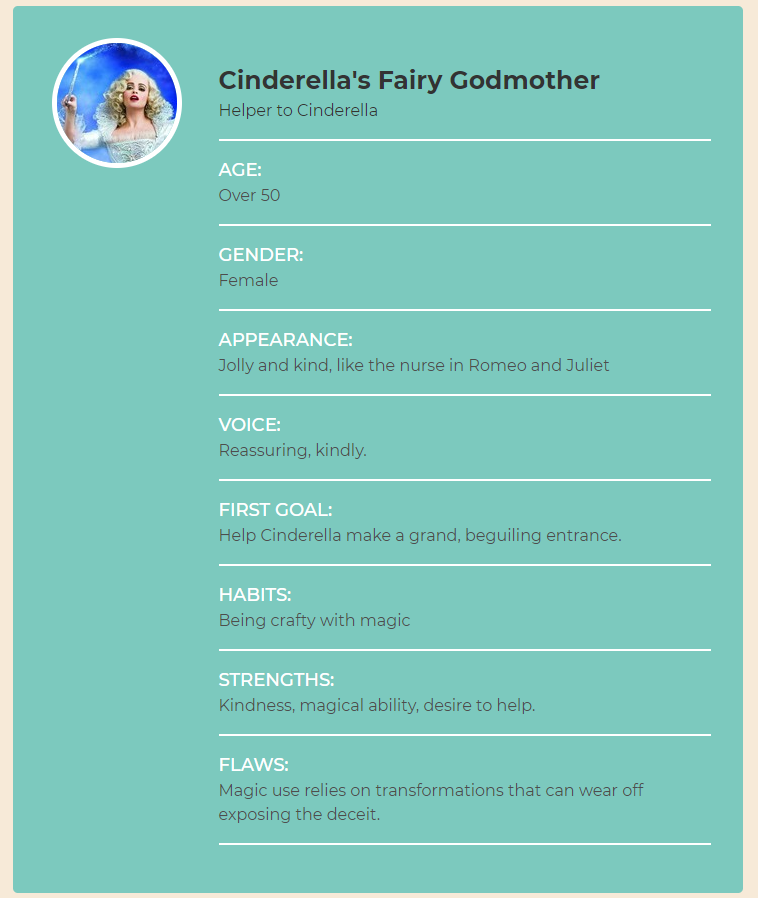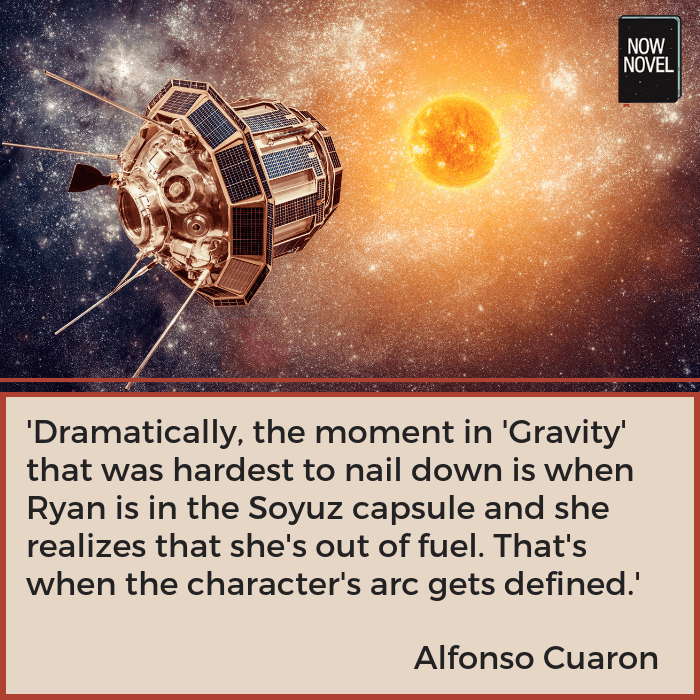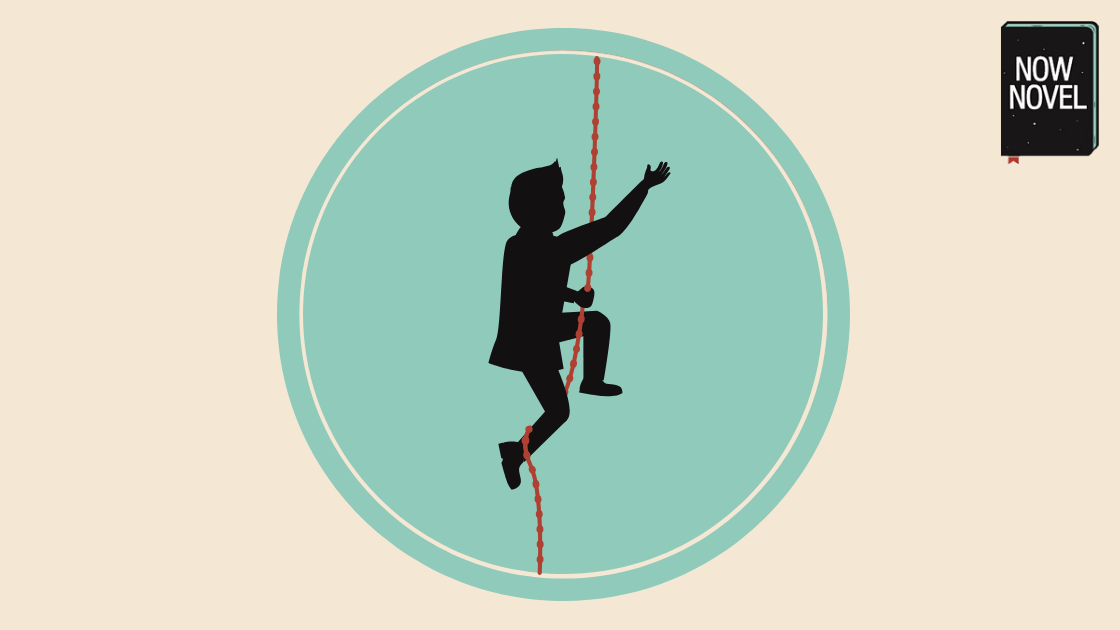Writing character profiles and brainstorming main characters’ arcs helps establish story direction. A good character arc template includes facts about your characters’ goals, high points and low points. Here are 5 steps to building a dynamic character journey
With character arcs you also, of course, create a story arc. Let’s look at some terms before going further.
Firstly, there are three kinds character arcs: positive arcs, negative arcs and flat character arcs.
A term worth keeping in mind is that of a positive character arc where a characters reaches their goal. Conversely, a negative character arc is when a character does not grow, but fails at what they wanted to accomplish, as an example.
While you might think that you should avoid having flat arc character, where a character does not grow or change, there are some well-known stories where this occurs and is actually part of the success of the story. Think James Bond or Sherlock Holmes, for example. These flat characters do not grow or change, their roles are simply to spy or solve murders. Our expectations of these kinds of series are built on what the characters must do within the role of the story. We don’t expect Holmes to have an existential crisis of any sort! These kind of arc are good for episodic serial storytelling.
Relatable and credible character arcs are important as fiction is very often a mirror of real life. They are also the key to creating memorable characters and powerful character arcs. Readers will relate to flawed characters, so if you want to avoid creating a ‘perfect’ character.
These are also good questions to bring to use when creating minor characters as well within your narrative arc.
Here are 5 steps to building a dynamic character journey with strong character arcs:
1. Find your character’s first goal
Interesting first goals develop out of interesting initial situations. Your opening story situation could be:
- An unbearable situation external conflict your main character wants to escape (e.g. Cinderella’s awful treatment by her stepmother in the classic fairy tale)
- An exciting arrival or surprise that promises new adventures (for example, the arrival of Harry’s mysterious acceptance letter to magic school in Harry Potter)
- An encounter with an enigmatic stranger (for example, in Nick Hornby’s A Long Way Down, several strangers who’ve decided to jump from a tall building meet and start talking about what brought them to this shared point of despair)
- Another plot point promising change
A good starting point to use when you create a character arc template or story plan is a situation involving big unknowns. We are uncertain what characters’ next steps will be. This uncertainty creates narrative tension. This tension is what distinguishes a dull sequence of unremarkable events from a story.
A character’s first goal springs from desires and goals established early in your story. In the Grimm fairy tale ‘Cinderella’, for example, Cinderella’s desire is to escape the misery of her stepmother’s cruelty and tyranny. Her goal is to attend a ball soon to be held by the region’s prince.

To make first goals intriguing:
- Hint at obstacles: In Cinderella, the reader wonders how a girl dressed in rags can compete at a lavish ball, and how the stepmother will respond if she finds out about this desire)
- Add stakes: What’s at stake if a character fails in pursuing their goal? For Cinderella, it’s remaining in her unfair situation (so we root for her). [Use the ‘Best case scenario’ and ‘Worst case scenario’ sections of the ‘Core Plot’ section in the Now Novel process to find stakes.]
- Reveal character: What does a character’s first goals tell us about their desires, fears, hopes, dreams?
2. Brainstorm helps and hindrances
Many great character arcs are full of multiple others who help (or hinder) the character’s journey. Writing coach Romy Sommer discusses some types of arc in this short preview of our monthly webinar:
Sometimes, secondary characters do a little bit of both.
For example, Boromir in Tolkien’s The Lord of the Rings is a core member of Frodo’s party on his quest. He is ‘the muscle’, joining their number to lend his fighting skill as they approach the villain’s heartland. Yet Boromir is overpowered by the corrupting force of the magical ring Frodo is sent to destroy. Thus he tries to snatch it from Frodo. ‘Helper’ character types can thus become hindrances, and vice versa.
When outlining characters who influence others’ arcs, give them complex strengths and weaknesses, too. Perhaps your characters make some bad decisions too, explore how this affects the trajectory of the story.
For example, in Cinderella, a fairy godmother comes to Cinderella’s aid. The strength she lends is her magical ability. Cinderella couldn’t possibly scrape together what she needs to make a dazzling entrance at the ball without a little witchcraft.
Yet the godmother’s weakness is that magic has (believable, interesting) limitations. The lavish costuming and transport the godmother conjures up for Cinderella will revert to its normal state by midnight. These limitations on the help ensure that Cinderella’s arc doesn’t rise to meet her goals too easily. This urgency and limitation sustains narrative tension.

The example of the fairy godmother in Cinderella demonstrates how characters who help others in their arcs have strengths, flaws and weaknesses like any others. These qualities give characters’ actions and their consequences intriguing unpredictability.
Brainstorm full character arcs
Profile your characters and brainstorm their arcs in easy steps using the Now Novel dashboard to create a story outline.
LEARN MORE >3. Find a point of no return
Think of a character arc as a roller-coaster. This metaphor for unpredictability may be a little clichéd. Yet it captures that moment when, after the ‘clack, clack, clack’ of ascent, you reach a peak and there’s no getting off. You’re strapped in for high velocity turns and terrors.
A great character arc has these qualities. It has velocity. Change happens. Not always at the same rate. Sometimes it’s a slow, clacking ascent. Sometimes it’s that brief, gut-wrenching pause before the hurtling descent. This is the moment when the protagonist faces their most difficult challenge. A point of no return, where your character fully commits to a plan, goal or route, creates focus for the story ahead. For a good, cohesive arc, focus not just on the first goal but characters’ end-goals, too.
For Cinderella, the first goal is getting to the ball. The end goal is winning over the prince and thus finding love to replace her loveless home. Points of no return like this are powerful because they often involve emotional states such as fear, courage, or defiance. As readers we empathize, having experienced similar emotions ourselves.
To create a compelling point of no return in a character arc:
- Give characters irreversible choices: In a romance, it might be choosing to pursue contact and connection with a mysterious ‘other’. In a fantasy quest it could be agreeing to a dangerous mission (such as Frodo’s in LOTR)
- Begin to reveal the consequences: How could the initial choices a character makes now complicate their situation? What other roads could the past take them down?
- Brainstorm rising and falling plot points that proceed from this point: These situations give further ups and downs. They bring your character closer to their goals or take them further away from them (you can brainstorm these in the Core Plot section of the Now Novel dashboard)

4. Plot growth and change
Compelling character arcs or intriguing arcs show the ways characters grow and change. An assassin who completes their first assignment may become bolder and more brazen once they find they can get away with murder, for example. Or else they might grapple with the psychological effects of their first major desensitizing act.
Growth and change are key to giving your story action and reaction. Great stories show how a single event ripples out and produces foreseeable (and unforeseen) results.
The ways characters develop and change can either help or hinder their pursuit of their goals. For example, in J.K. Rowling’s Harry Potter fantasy series, Hermione Granger is established as an intelligent, bookish know-it-all from the start. Part of Hermione’s arc involves learning how to break the rules for the greater good (in order to defeat the series’ villain, Lord Voldemort, being the prime example). n The Hunger Games by Suzanne Collins, Katniss Everdeen becomes the leader of a revolution.
This type of character development reveals that a character’s strengths (e.g. Hermione’s discipline) often have related ‘shadow’ sides or drawbacks (such as Hermione’s fussy rule-bound nature).
Character archetypes (such as ‘warrior = strong’) are useful, because they give us recognizable imagery and characters. Yet great character arcs can reveal the contradictions and struggles within the archetype. We see the warrior’s fear of being or coming across ‘weak’. The scholar’s fear of failure. The emotional wounds present in all of us.
An effective character arc may show how a character reaches a more practical middle ground between their strengths and weaknesses. Or how they spiral down in the absence of a successful balancing act. An arc isn’t always an ascent – in a tragedy, it may be a gradual (or breakneck) descent to a worse place.
5. Bring external and internal conflicts to a head
Conflict is key to developing a good character arc. A character might struggle internally with a doubt, mistake, or other form of burden. They may also face conflict with others (individual characters or society at large) or their environment.
Whatever the main conflicts in your story, show how characters overcome or succumb and how characters complete or attain the story goal. The conflicts in character arcs give us:
- Narrative suspense: How will the conflict resolve? The reader has to know the answer
- Fodder for change: How could your character adapt through conflict or gain new skills? Are they wiser? Tougher? More vulnerable? More self-aware?
- Characterization: How your characters respond to situations of conflict gives us insight into their personalities
In The Lord of the Rings the destruction of the ring is this end-point (although the heroes still return home to find further conflict that has mushroomed in their absence). Once you have an idea of your core conflicts, you’ll have all you need to create a detailed summary of your story idea. [You can do this in the ‘Summary’ section of the Now Novel dashboard].


2 replies on “Character arc template: 5 steps to strong character arcs”
[…] will also soon develop our own character arc template, but in the meantime, check out this character arc template from Now Novel. It covers five […]
[…] https://www.nownovel.com/blog/detailed-character-arc-template/ […]